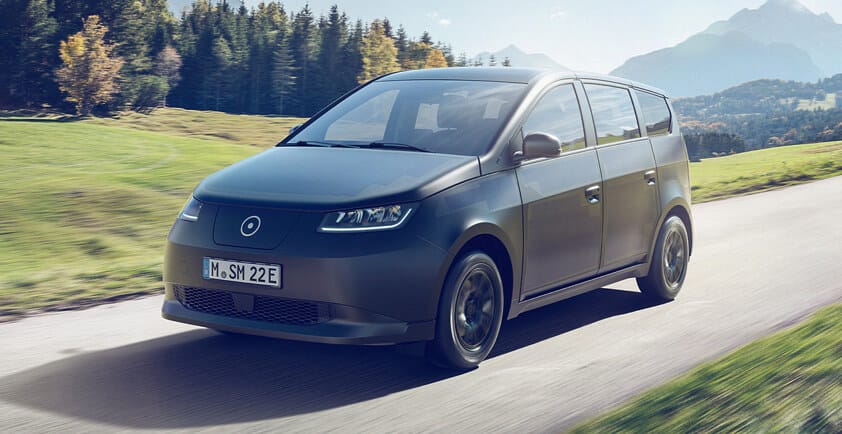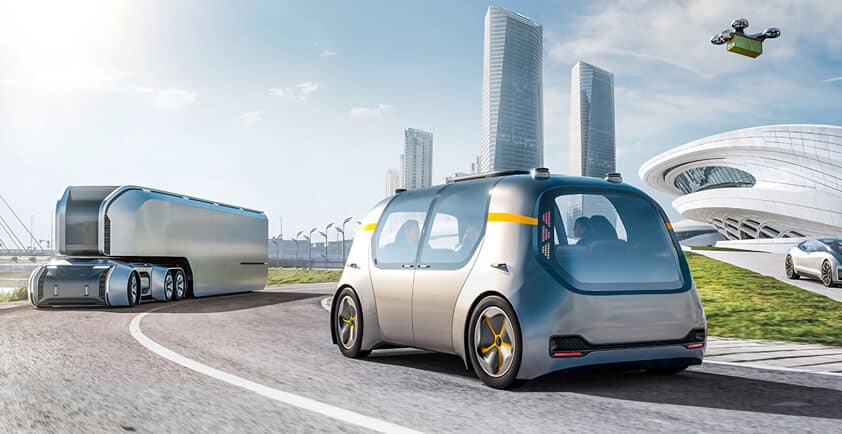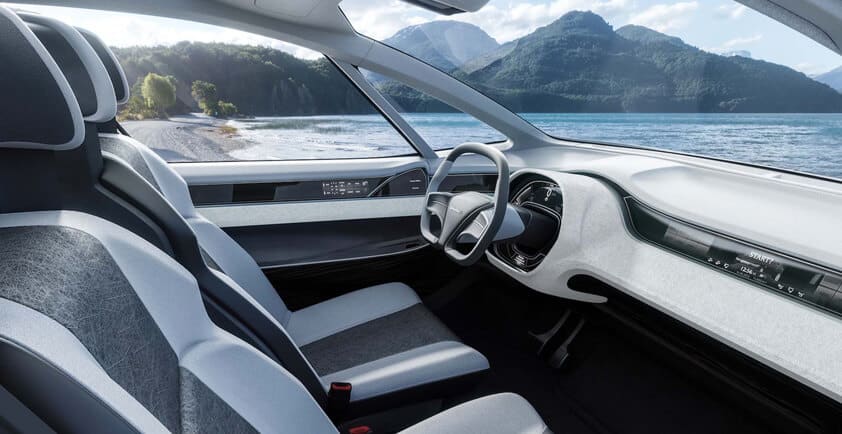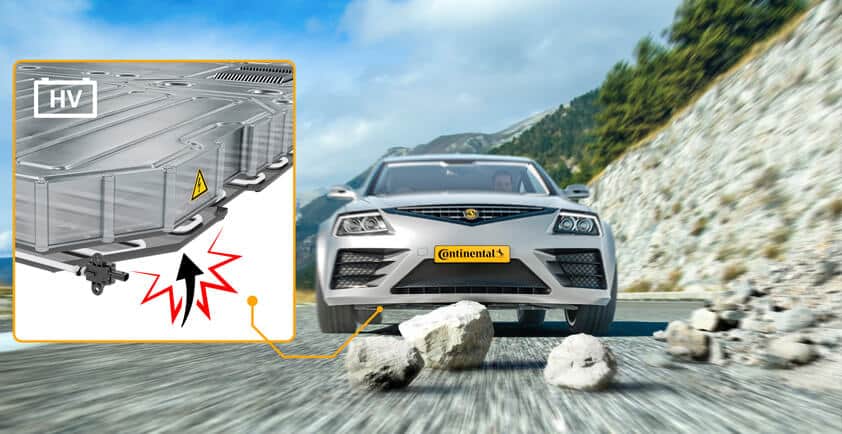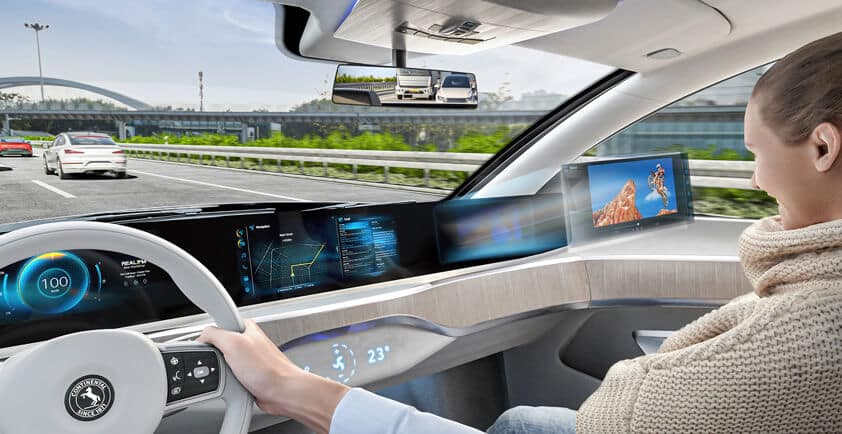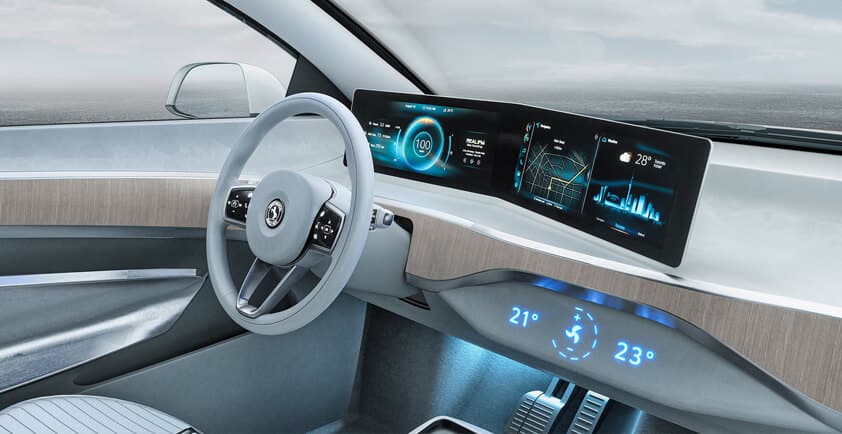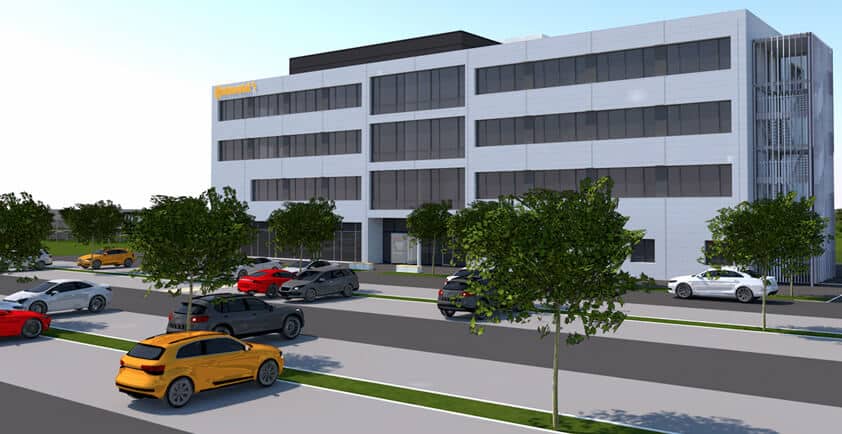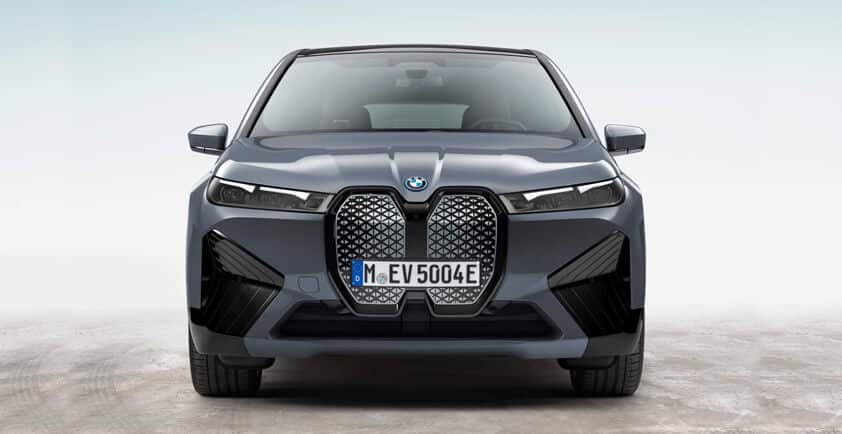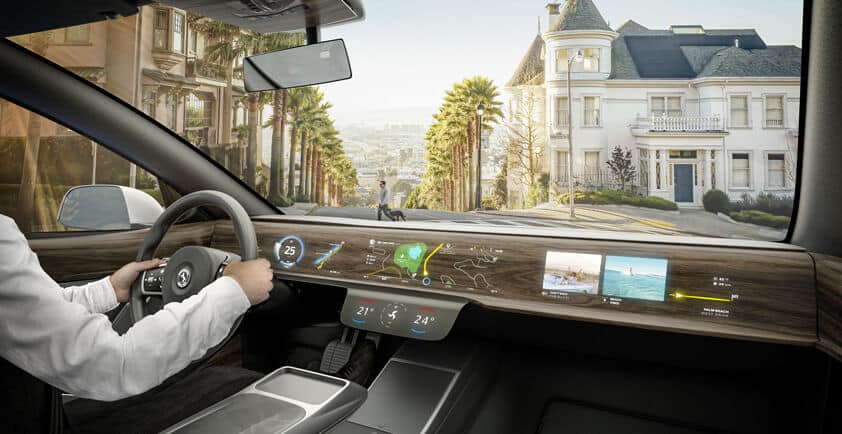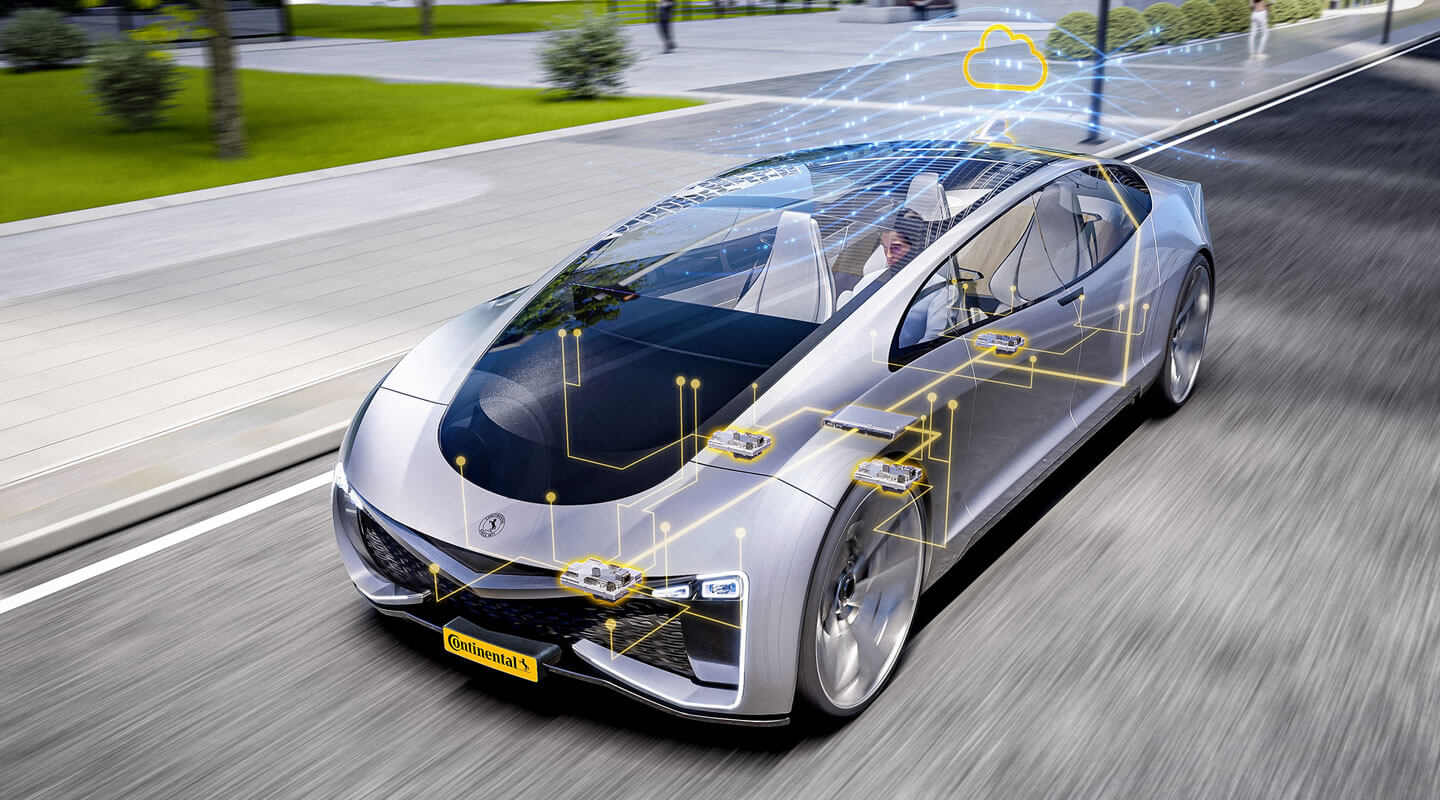
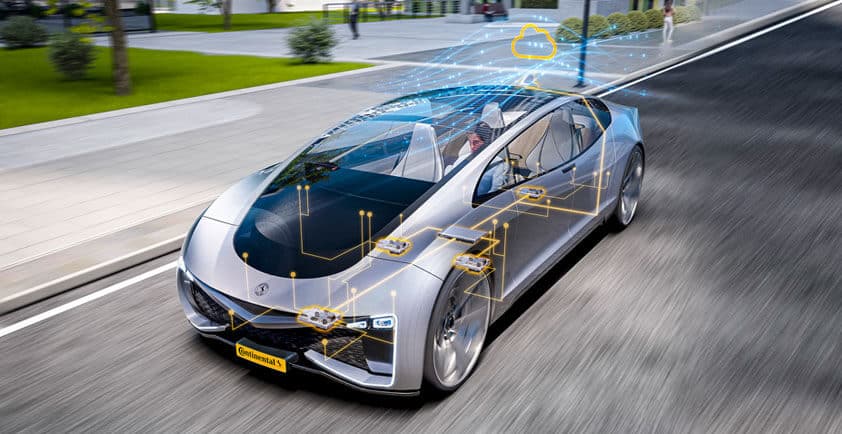
EFFICIENT AND HIGH-PERFORMING VEHICLE ARCHITECTURE: COOPERATION OF CONTINENTAL AND INFINEON
>> Continental develops innovative modular platform for electrical/electronic architecture using Infineon's high-end AURIX TC4 microcontroller
>> Zone control units serve as an interface between high-performance computers and sensors/actuators for complex software infrastructure
>> Joint introduction of RRAM technology for automotive
>> "With our new architecture solution, we are making the vehicle fit for the future. The cooperation with Infineon is now an important step towards realizing this development quickly for our customers," says Gilles Mabire, CTO Continental Automotive.
Frankfurt, Germany. Continental will be collaborating with the semiconductor manufacturer Infineon Technologies AG in the development of server-based vehicle architectures. The goal is an organized and efficient electrics/electronics (E/E) architecture with central high-performance computers (HPC) and a few, powerful Zone Control Units (ZCU) instead of up to a hundred or even more individual control units, as it was previously the case. Continental now uses Infineon's AURIX TC4 microcontroller for its ZCU platform. Thanks to special storage technology in the AURIX TC4, the vehicle software is on standby. As soon as the vehicle is started, functions such as parking assistance, air conditioning, heating and suspension are ready within fractions of a second. With its platform approach, Continental is supporting the different requirements of the automobile manufacturers. By individually configuring the number of HPCs and ZCUs, how they interact and how they are arranged in the vehicle, automobile manufacturers can individually tailor their architecture to their needs.
"With our new architecture solution, we are making the vehicle fit for the future," says Gilles Mabire, CTO Continental Automotive. "The growing variety of vehicle functions requires more and more computing power and increasingly complex software applications. Continental's new architecture is paving the way for the software-defined vehicle. The cooperation with Infineon is an essential step in realizing this development quickly for our customers. Thanks to our platform strategy, proven application software can be used in new vehicle models, for instance. As a result, the time-consuming validation effort is significantly reduced. New functionalities can be brought into serial production much faster."
The third generation of the AURIX microcontroller family, TC4x, offers the same scalability in terms of performance, memory and housing variants as the previous generations, AURIX TC2x and TC3x. Among other things, AURIX TC4x was designed for usage in ZCU and HPC. Further focus applications are radar, chassis and safety and powertrain/electrification.
A key element of the new microcontroller series is the RRAM (Resistive Random Access Memory) memory technology used by Infineon. This technology is already used successfully in chip cards, for example when doing cashless payments and for secure authentication. For the first time, RRAM technology is now applied in the automotive sector. AURIX TC4x products enable effective, fast and safe exploitation of essential vehicle systems potential. When a vehicle is started, functions like parking assistance, air conditioning, heating and suspension are available within fractions of a second. Thanks to the AURIX TC4x architecture, essential software programs are almost constantly on stand-by. In addition, it enables significantly faster and more secure Over-the-air updates of software components.
"The cooperation with Continental makes it possible to bring RRAM technology into automobiles," says Peter Schiefer, President of the Automotive Division at Infineon. "Together with innovation drivers in the automotive industry like Continental, we are shaping the mobility of tomorrow. The microcontroller family AURIX TC4x is an important building block for the next generation of E/E architectures and can make the crucial difference when it comes to efficiency, safety and comfort in future vehicle generations."
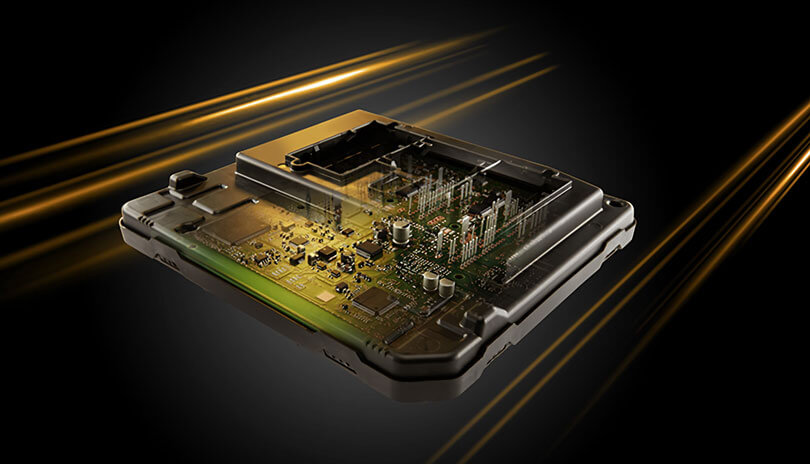
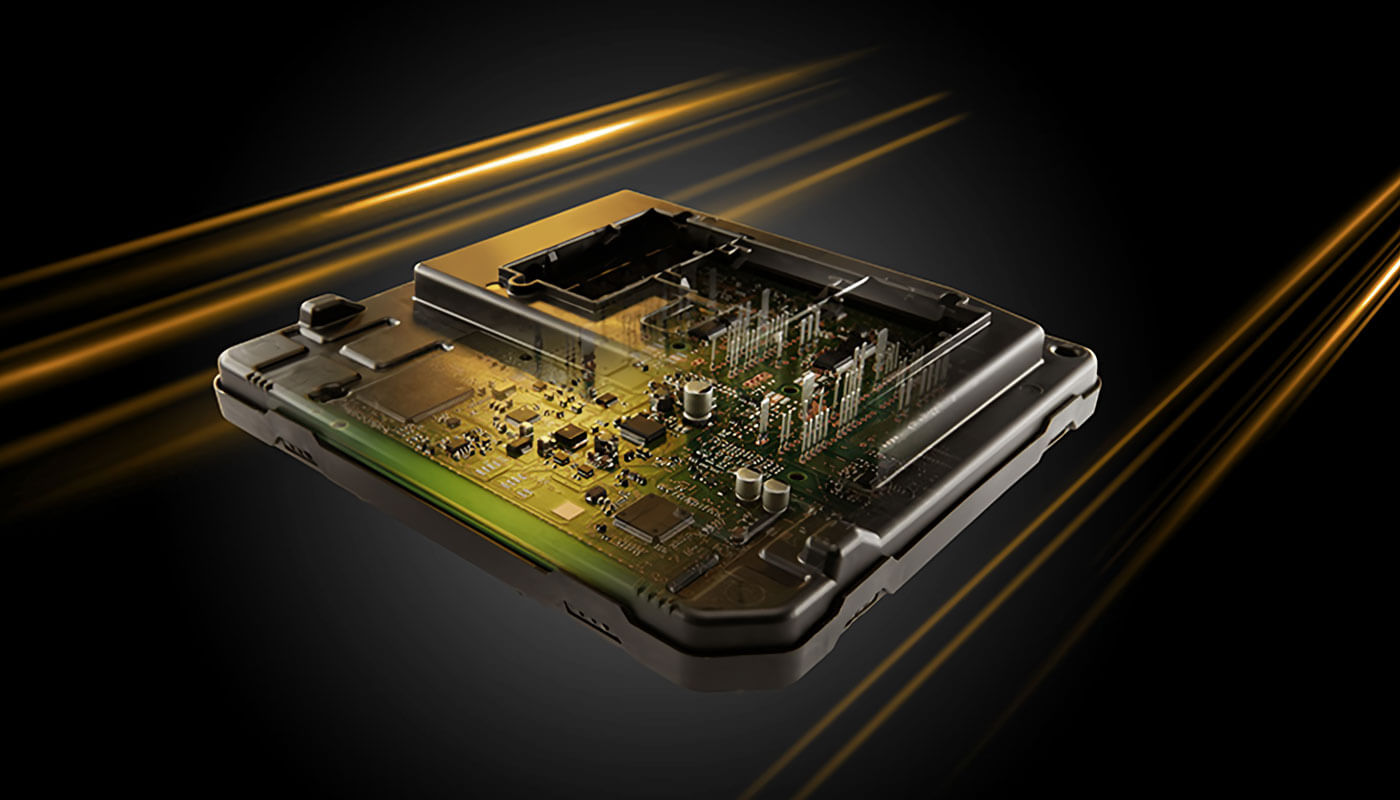
Zone Control Units: Decisive for the mobility of tomorrow
The use of powerful Zone Control Units is the next decisive step towards a software-defined vehicle. For Continental, a first major step was the development and delivery of an HPC high-performance computer for the electric vehicle models ID.3 and ID.4 from Volkswagen.
The zone control unit platform, to be developed as part of the cooperation with Infineon, forms the middle level of the electrics/electronics architecture between the server level (HPC) and the base level with numerous sensors and actuators. "We offer all essential components for software-defined vehicle architectures from a single source. The new platform is scalable as well as modular in terms of performance and interfaces. As a result, we can offer maximum flexibility to automobile manufacturers for designing vehicle architecture," says Jean-Francois Tarabbia, Head of the Business Unit Architecture and Networking at Continental. "Moreover, we enable the integration of third-party hardware and software in order to introduce innovative solutions quickly and cost-effectively."
In the E/E architecture of the future, a zone control unit bundles all electronic and electrical connections in a local section of the vehicle. For instance, zone control units take over all control, data and communication management tasks in the vehicle from areas at the front right, front left and rear. Bundling the software components centrally will thereby increase cybersecurity and updatability. The AURIX TC4x product family puts a focus on state-of-the-art cybersecurity functions, developed according to the ISO/SAE 21434-certified process. Among other things, the cybersecurity concept of the AURIX TC4x supports post-quantum processes. This already strengthens protection against quantum computer attacks, which pose a threat to the cryptographic methods currently in use.
Data streams from different vehicle domains merge in the zone control units. The data will then be processed and passed on to the HPCs as the top control level via secure Ethernet connections. Conversely, the zone control units act as a coordination point for executing commands from the server level.
With its holistic "Functional Safety" concept, the AURIX TC4x family meets the highest requirements for functional safety up to ASIL D, in accordance with the ISO26262 standard. Moreover, the AURIX TC4x family includes network accelerators ("routing accelerators") to relieve Ethernet and CAN communication, as well as latest communication functions such as 5 Gbit/s ETH, PCIe, 10 Base-T1-S and CAN-XL.
With these features, AURIX TC4x enables the next generation of software-defined vehicles and new E/E architectures. "Our new vehicle architecture, consisting of a few powerful zone control units and high-performance computers simplifies the wiring harness substantially. It saves weight and energy," says Tarabbia. "Thanks to a clear division of tasks in the organized vehicle electronics, the separation of hardware and software and lastly, the necessary standardization of interfaces, the growing complexity and an almost exploding scope of software inside the vehicle can be managed in a much better way."

